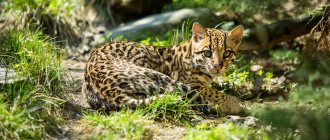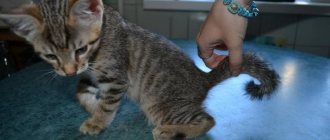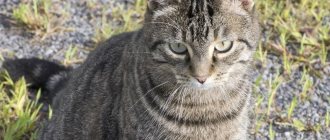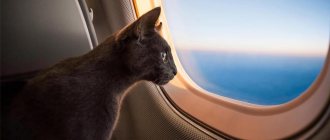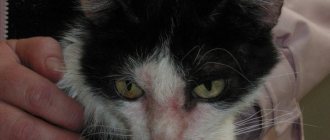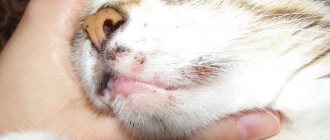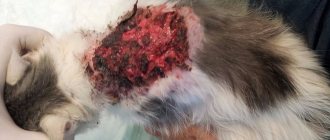Many cat lovers dream of having their own little leopard. In recent years, pets with this color have become popular. The Asian leopard cat (ALC) is particularly beautiful, so people domesticated it, and then based it on a new breed of domestic cat. However, ALCs themselves are becoming increasingly popular. Those who want to own a wild cat need to become familiar with the characteristics of its behavior and the conditions necessary for keeping it in captivity.
Varieties and habitat of the Asian leopard cat
Scottish surgeon Robert Kerr first wrote about the wild leopard cat. He translated Carl von Linnaeus's book "System of Nature", supplementing it with his own observations. In the book, Kerr talked about a wild cat living in South Bengal (now part of India). Scientists named the animal Felis bengalensis - Bengal cat.
Modern scientists classify this species as representatives of the genus Prionailurus, i.e. eastern, therefore in Latin these cats are designated Pr.bengalensis. It was possible to describe 12 subspecies of Bengal cats. These animals are common in the East - there are about 500 thousand individuals. The habitat of spotted predators is wide. They can live in coniferous or tropical forests, and are often found in deserts and savannas.
Peculiarities of behavior of spotted cats
Spotted coat coloring is the best camouflage for a predator. Pets with leopard coloring carry the gene of wild ancestors in their blood or are as close to them as possible. This explains their energetic and active character.
Such animals need a large space for play, often love water and swim well, and are excellent hunters and fishermen.
Like any wild cat, they are independent and self-sufficient. You should not try to forcefully pick them up, sit them on your lap, or play with them. Little “leopards” will come to a person on their own when they see fit.
Spotted cats are very smart, real intellectuals. They easily learn the simplest commands, remember a fairly large set of words perfectly, and quickly get used to wearing a harness.
With proper early education, they socialize well and never show aggression.
They are very attached to their owner and yearn for loneliness. It is better to keep such animals in the house in pairs. Then, in the absence of household members, they will perfectly occupy themselves, quickly make friends with any other pets, but will always remain leaders.
Just don’t introduce them to parrots or rodents - most likely, the hunting instinct will be stronger than their liking.
For pet “leopards” it is necessary to purchase a large play complex, exercise equipment and interactive toys. Their energy always requires an outlet.
Exterior of a wild animal
There are 10 subspecies of the Asian wild cat in the wild. They are distinguished by color and size of spots, which depend on the habitat of the animals. Individuals living in warm latitudes have darker spots than their northern counterparts. All representatives of the breed have spots that are stretched horizontally.
The dimensions of leopard cats are not so different from the sizes of ordinary pets: weight - from 2 to 10 kg, height at the withers - up to 40 cm, body length - 40-60 cm. Their main coat color varies from grayish to yellow, but The belly and lower jaw of all cat varieties are light.
What is the official name of the leopard cat and when did the breed appear?
The history of the breed began back in 1961. It was then that a geneticist from America, Jean Mill, went to Bangkok. At a local market, she saw an Asian wild cat kitten. The kitten stood out from the rest with its unusual beautiful color.
Jean Mill named the baby Malaysia and took her with her to the USA. Soon the already grown-up cat gave birth to a kitten from an ordinary domestic cat. The kitten had two obvious traits: he got stronger genes and a beautiful color from his mother, and an affectionate and flexible character, like a domestic cat, from his dad. The animal had good immunity and excellent health, but for some reason it failed to survive. Circumstances were such that Jean Mill was forced to give Malaysia to the zoo. For a while, work on developing a new breed was suspended.
The genetics specialist was haunted by the thought of getting a completely new breed. After 15 years, she was given a chance. At the institute where the American worked as a biologist-geneticist, research was actively carried out on the inheritance of immunity to the feline leukemia virus. As experiments to develop the desired “formula,” wild cats were bred with domestic cats. Jean, as the project leader, proposed crossing a wild Asian cat and a domestic one. As a result, strong and healthy kittens appeared. Jean was able to collect 9 hybrid females, who did not take part in further experiments.
In 1982, Jean ended up in India, where she saw a male wild kitten. Its distinguishing feature was its spotted, golden-orange fur. He later fathered subsequent offspring. The breed began to rapidly grow in number of representatives. In 1991, the first leopard cat was introduced at the TICA Championships under the name Bengal.
Maine Coon is also available in leopard print
This raccoon cat is the pride of American catteries, for decades being the world's largest cat breed (weight up to 16 kg, size up to 1.5 meters). The Maine Coon is an excellent hunter with a friendly and calm character. In the specified colors it can be bought from an advertisement for 15 thousand, but the pedigree is not indicated.
The independent Siberian cat (Siberian breed), known since the time of the development of the territory of the same name, often has a leopard color, is famous for its famous fluffy coat and character, suitable for keeping in almost any environment, preferably in the north. Cost – 5 thousand and above.
New, experimental breeds, not very common and therefore expensive are:
The Californian shining cat is not wild, on the contrary, it combines Manx, Siamese, Angora, Abyssinian, and British Shorthair. This is a symbol of the wild cats of Africa that are being destroyed by people. Created by Paul Casey, screenwriter. Friendliness, intelligence, and quick wit are combined with undemandingness and silence in these cats. Tabby color is available in 8 variations - gold, silver, red, blue, bronze, brown and black. The cost of the shining Californian cat is high ($1,500-$2,000); it is currently sold only in the United States; the exclusive product is not available to everyone.
Character and temperament
By nature, these animals are very cautious and timid. Tamed individuals are also not gullible. They get used only to members of the family in which they live, and avoid guests at home. If a stranger tries to pet an Asian leopard cat, it will react with aggression.
Tamed cats are playful and curious, but do not particularly like affection. They prefer fun in which they can realize their hunting instincts, so they love to fish in open aquariums. They consider any small animals as potential prey.
Where to buy ALC: choice of kitten and price
As mentioned above, it is better to buy a kitten in a nursery, where from a very young age kittens are raised by humans, tamed and minimally aggressive. Companies that sell exotic animals should be treated with caution. They often buy small kittens caught by local residents in Southeast Asian countries and sell them as kittens from a nursery. When choosing a breeder, it is important to make sure that the kittens are born from his animals and personally evaluate their living conditions. The average cost of an Asian leopard cat kitten is $15,000.
Serengeti
The goal of breeding the Serengeti breed was to create a cat that resembled the wild Serval, but did not contain any of its ancestry. The first Serengeti was created by Karen Sauzman in 1994 by crossing a Bengal and an Oriental cat. Subsequent offspring were crossed with many other types of cats to perfect the breed. However, the Serengeti ancestry includes genes from the wild Bengal cat, which was used to create the domestic Bengal cat. Cats of this breed have long ears and legs, like a serval. They are very mobile, active, and sociable.
Didn't find what you were looking for? Use the site search form
Characteristics of this breed
Bengals are difficult to breed, which is why the breed is rare and expensive. Bengals are the most talkative of all domestic cats.
Be sure to read:
Ocicat cat breed, description, character, price and advantages
They can not only purr and meow, but also make about 100 unique sounds. If an animal gets angry, it will growl. Only Bengals can do this.
Cats of this breed are not afraid of water, and many even like to swim. This is the kind of “love” that Bengal cats have from their wild relatives. They lived in Asia, where there were many lakes, rivers and other bodies of water.
Size and weight gain
Cats are much larger than cats. After reaching puberty, the male becomes twice the size of the female. With a height of 90-100 centimeters, the weight of the cat is 8-9 kilograms.
Cats gain up to 5 kilograms. Bengals have a long, muscular body and strong legs.
Shedding
Bengal cats are short-haired, so with the right diet they practically do not shed.
The glitter on the Bengal fur should be pronounced, the fur should look like mink fur
Active hair loss can be triggered by a deficiency of vitamins due to an unbalanced diet or sudden changes in hormone levels.
Allergy
Many breeders say that Bengal cats cannot cause allergies. However, in the saliva of any cat, regardless of breed, there is a specific protein, which provokes a histamine (allergic) reaction.
Wild Lifestyle
Asian spotted predators try to stay near water. They swim well, but they do it extremely rarely. Animals live in pairs only while raising offspring (for 8 months); the rest of the time they live alone. Some cats make several homes for themselves, which can be hollows, abandoned holes, or holes under the roots of upturned trees.
Wild cats hunt mainly at night. They often look for food in the treetops, catching small birds, squirrels or tree shrews. The predator also eats small lizards, snakes, rodents and insects, often catches fish, and destroys bird nests.
In warm areas, ALCs breed all year round. Animals living in northern regions give birth in the spring. The female gives birth to 2 to 4 kittens. For the first month of life, the babies do not leave the den, feeding on their mother’s milk. Then they begin to try solid food and learn to hunt.
If necessary, the Bengal cat can climb rocks or swim. On average, Asian wild cats live for about 12 years. These cautious animals prefer not to meet people.
Somali cat
Descended from the Abyssinian cat, the longhaired Somali also has the appearance of an African wild cat and, thanks to its bushy tail, can be mistaken for a fox. Like their related shorthaired Abyssinians, Somali cats are also intelligent, curious and very active animals. If you are looking for a calm cat for your lap, then the Somali breed is not for you.
Captivity
There is a belief that the Asian leopard cat is difficult to tame, but in reality this is not the case. Animals do well in a person’s home if they are raised correctly. It is really difficult to make an adult cat or a kitten older than 3 months as a pet. Babies raised next to a person easily get used to him and completely trust their owner.
Females in captivity often refuse to care for their young, and the young have to be fed artificial formula. These are the kittens that make wonderful pets, but raising them is painstaking and difficult work. The task can be simplified by a foster mother, who is often an ordinary domestic cat with well-developed maternal instincts.
Diet.
ALCs are exclusively carnivorous animals. They feed on a wide variety of small prey, including mammals, amphibians, lizards, birds and insects. In most of the range, the main diet consists of small rodents, mice and rats, with birds, eggs, fish and grass remaining for snacks. Bengal cats are active and dexterous hunters; with a jerk from an ambush, they pounce on their prey and bite it. Unlike many other cats, they do not play with food and tenaciously hold it with their claws until their imminent death. This is probably due to the high proportion of birds in their diet, which fly away, unlike rodents.
What to feed your Asian cat at home
The main food for the Asian leopard cat in captivity will be lean meats (beef, rabbit, veal), however, to maintain health and physiological activity, live food is required (mice, rats, day-old chicks and quail). Without the realization of the hunting instinct, behavioral reactions become dulled, which leads to boredom and obsessive movements. This is also necessary to maintain the health of the animal. Indeed, in addition to fresh meat, the cat eats the contents of the intestines, part of the skin, and the brain. To complete the protein diet, fish is offered once a week.
The Asian leopard cat usually eats once a day. The daily norm includes 2 mice, one rat or 200 g of lean meat. In the absence of live food, the diet must be supplemented with vitamins and minerals.
Once a week there is a fasting day. In captivity, cats do not expend as much energy as in the wild, and as a result, they gain excess weight, often get sick, or even die. Some, in addition to one fasting day, arrange another half-starvation day, when half the daily portion is given.
ALC firstborns often abandon kittens, which have to be artificially fed. Various feeding techniques have been developed, but the best replacement mother is a domestic cat. Alternatively, use cat milk powder, goat milk or baby food.
Reproduction
Typically, cats mate in the spring, but among South Asians, there is no specific time for the mating season.
It is believed that at one and a half years the cat is absolutely ready for sexual activity. But in nature, kittens become adults early and at about 7 months they can already acquire a bride. And females choose a companion at the age of 10 months. A pair is made once and for life. Further, caring mother and father raise their kittens together and do not leave them until they are 8 months old.
The entire mating period consists of five or ten days.
The gestation period lasts about 70 days. Usually there are not many kittens born, usually no more than 4. In their den, father and mother take care of the babies for a whole month.
One born kitten weighs approximately 100 grams. And over the next week, the baby gains twice as much. After another 3 weeks, body weight increases 4 times.
Already 10 days after their existence, kittens begin to see the whole wide world. And after another 13 days they can already try to eat not only milk, but also something solid. About 4 weeks after birth, babies develop fangs - this indicates that they are predators and are ready to try solid food.
A female can give birth to two litters of kittens in a year.
How many years do leopard cats live in the wild and in captivity?
The lifespan of wild animals is from 12 to 15 years; in captivity they can live up to 20 years. This largely depends on the cat's living conditions. I must say that they are in good health and rarely get sick. ALCs have a naturally strong immune system, allowing them to cope even with leukemia, a disease that often kills domestic cats. The stomach and heart are the weak points of these predators.
Appearance
The Asian cat is roughly the same size as the domestic cat, but there are minor regional differences. Thus, the inhabitants of Indonesia have an average body length of 45 cm plus a 20 cm tail, weight 4.5-6.8 kg. Cats from the Amur region grow up to 60 cm, plus a tail that reaches 40 cm, weight about 10 kg, cats in winter can weigh up to 15 kg. The color of the coat also differs slightly depending on the habitat. In the south, the base color is more yellow, truly reminiscent of a leopard. In the north it is predominantly gray-brown. In northern cats, the spots are shaped like circles, while in southern cats they are more often rosettes or black strokes. You can see the differences between some subtypes of ALA in the photo in the gallery.
Asher breed
The Asher cat is a large and very kind pet. The meter-long cat boasts not only long legs, a beautiful spotted color and the attentive gaze of a wild cat, but also an interesting pedigree. See also what the largest domestic cats are.
To breed Asher, breeders for a long time crossed leopards, servals and outbred cats.
Long-legged beauties are valued for many qualities:
- Wild, predatory appearance;
- Flexible, good-natured character;
- Unpretentiousness in food;
- Gets along easily with younger family members;
- Acts mostly like a normal cat.
Where can I buy a kitten and how much can it cost?
Finding an ALK kitten is not easy, but it is possible. In Russia, several nurseries of exotic animals sell them. The cost of unusual pets is high, for example, “EkzoticZOO” offers to purchase ALC for 200 thousand rubles and more, “Zoo-ekzo” - from 100 to 300 thousand rubles. The buyer receives complete information about the keeping of animals and veterinary documents for them.
You can find advertisements for the sale of ALC given by private individuals, and the cost of kittens in these cases is usually several times less. However, there is a high risk of purchasing a hybrid instead of a real leopard cat, a sick or undomesticated animal.
Share with friends!
Care and maintenance at home
The cat, like the leopard, is a fairly common breed. Many people dream of owning such an animal. However, it is important to understand that the animal will require certain living conditions.
How to create the necessary conditions in an apartment or house
Animals love cleanliness and large space. They should not be placed in a small room. If possible, the ideal option would be to create a separate room for the cat to play, where a scratching post will be placed. The toilet should be large, as close to natural as possible, so that the animal can bury itself. A litter box with bars is not suitable for a Bengal cat. The house and play complex should be chosen high with different levels where cats could climb. Cats are naturally very curious, so it is better to remove sharp or easily breakable objects from open areas.
What to feed
These animals should absolutely not be fed “human” food. It will provoke problems with the gastrointestinal tract and other vital organs. It is better to contact a specialist who will write out the correct diet, which will contain all the vitamins and microelements the animal needs. A cat's diet should consist of 70% meat. The rest is fats, carbohydrates and vitamins. You can give your pet supplements, but you should consult with a specialist first. It is necessary to prepare meals from the early days of life, since the animal tolerates changes in diet very poorly.
You can feed your leopard cat both store-bought bagged food and natural products.
How often and for how long to walk
You need to walk your cat at least once a day. You can toilet train in an apartment, but then you need to provide the animal with access to fresh air.
Where to buy a kitten and how much it can cost
Leopard kittens are difficult to purchase in Russia. Therefore, when purchasing such a pet on the market or through an advertisement, you need to be extremely careful and double-check the pedigree.
The cost of kittens is determined depending on the standards and their pedigree. Depending on these two components, the price can vary from 7 to 15 thousand rubles without pedigree. In nurseries the price increases to 30 thousand rubles. Adult individuals for breeding, which have an excellent pedigree, cost from 50 to 100 thousand rubles.
Bush cat from the African continent - serval - waterfowl of a nocturnal predator
... which has been domesticated almost since the times of ancient Egypt. But this animal came to Europeans and Americans only in the 19th century. The breed has not yet received permission to participate in competitions; the kittens do not have an official pedigree. Care, living conditions and food are very unusual, and the cost exceeds half a million rubles.
The Abyssinian and the Serval gave birth to offspring called the Savannah, which is considered the largest breed in the world. The leopard color here is of “wild” origin, varieties are silver, gold, cinnamon, red, chocolate. Savannah is inquisitive, playful, loves water treatments, inquisitive and does not tolerate loneliness well. The price of a large leopard cat is 4-20 thousand dollars, when delivered to Russia it can reach up to 1.5 million rubles.
Serengeti is a predatory color combination, similar to the serval, but created without the participation of wild blood, honey eyes and large ears, and the character is just a gift to all cat fans, it is curiosity, lack of fear of strangers, playfulness, love for the attention and understanding of the owners. The cost of the graceful Serengeti, despite the increasing number of breeders, can be determined as 1-2 thousand dollars, and this is not yet even a breed that does not participate in exhibitions and competitions.
Those who like a leopard with tasseled ears like a lynx should take a closer look at the pixie-bob (short-tailed elf), created back in 1985. Unconfirmed data indicate the presence of a “wild” gene, but evidence and information about the origin of the breed are unknown. A bright appearance with several characteristic features at once does not prevent the pixie-bob from having the behavior and disposition of dogs. Loyalty, observation, calmness and friendliness towards everyone (including children, other animals, strangers) - these are the nice pets, in order for them to become your companions, get ready to fork out $600-1500. For breeding in a nursery you will need even more - 5000.
Health and life expectancy
In general, the Asian leopard cat has good health and good immunity; it is susceptible to the same diseases as its domestic relatives, but gets sick less often. To maintain health, she is required to undergo regular vaccination against major infectious diseases, good living conditions and proper nutrition. Life expectancy in captivity can reach 20 years.
Most leopard cat subspecies are endangered.
In nature, wild cats have many enemies; in fact, these are increasingly larger predators. Due to the fact that she is dexterous and neat, she is rarely caught. A much greater threat is posed by people who hunt ALC for its beautiful coat. From 1984 to 1989, about 200 thousand spotted skins were exported from China. In 1988, the European Union introduced a ban on their import, but this did not lead to a complete cessation of hunting. Japan continued to buy raw materials. In addition to fur, ALCs are killed by local residents for meat or in retaliation for killed birds. Poachers also catch cats and kittens for sale on the black market to exotic lovers.
